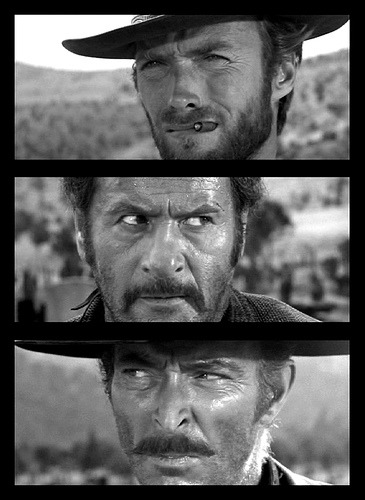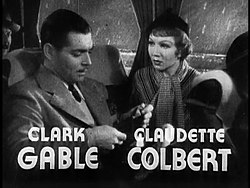What was Charlie Chaplin’s final film?
A Countess From Hong Kong (1967). It was the first (and only) color film (and widescreen film) that Charlie Chaplin ever made, and the only one funded by a major studio. It featured a worldwide smash song, "(Love) This Is My Song," written by Chaplin and sung by Petula Clark.
It was a critical failure. However, critics such as Tim Hunter & Andrew Sarris, as well as poet John Betjeman, consider- ed the film among Chaplin's best works. Chaplin himself considered it his greatest film at the end of his life.
Who was the first actor to portray Method Acting in films?
Marlon Brando. In his films of the early 50s, Brando brought a raw naturalistic realism to the screen that he had acquired at the Actors Studio in New York.
What are "Spaghetti" Westerns?
Spaghetti Western is a nickname for a broad sub-genre of Western film that emerged in the mid-1960s, so named because most were produced and directed by Italians, usually in co-production with a Spanish partner and in some cases a German partner. The partners would insist some of their stars be cast in the film. The typical team was made up of an Italian director, Italo-Spanish technical staff, and a cast of Italian and Spanish actors, sometimes a fading Hollywood star and sometimes a rising one like the young Clint Eastwood in three of Sergio Leone's films. The films were typically shot in inexpensive locales resembling the American Southwest. Typical themes in spaghetti westerns include the Mexican Revolution, Mexican bandits, and the border region shared by Mexico and the United States.
What was the first Science Fiction movie?
Le Voyage dans la lune (A Trip to the Moon) in 1902.
 What was the first film about giant monsters?
What was the first film about giant monsters?
Beast from 20,000 Fathoms (1953). It was the first live action film to feature a giant monster awakened or brought about by an atomic bomb detonation to attack a major city. Due to its financial success, it helped spawn the genre of giant monster films of the 1950s. Producers Jack Dietz and Hal E. Chester got the idea to combine the growing paranoia about nuclear weapons with the concept of a giant monster after a successful theatrical re-release of King Kong.
What are "Angry Young Men" Films?
A new wave of grim, non-fictional, social realism in British cinema, dubbed or styled "Kitchen Sink" due to its angry, every-day working-class heroes, frank dialogue, and negative post-war themes, was exemplified in the grainy, powerful works of various directors in the late 50s and early 60s. These socially-conscious films were also categorized as "Angry Young Men" films, due to the fact that each one focused on the economic and social problems of a frustrated male protagonist who attempted to break free from society and its expectations, through the use of alcohol, sex, sports, and money, etc.
What was Cary Grant’s final film?
Walk Don't Run (1966).
A Countess From Hong Kong (1967). It was the first (and only) color film (and widescreen film) that Charlie Chaplin ever made, and the only one funded by a major studio. It featured a worldwide smash song, "(Love) This Is My Song," written by Chaplin and sung by Petula Clark.
It was a critical failure. However, critics such as Tim Hunter & Andrew Sarris, as well as poet John Betjeman, consider- ed the film among Chaplin's best works. Chaplin himself considered it his greatest film at the end of his life.
Who was the first actor to portray Method Acting in films?
Marlon Brando. In his films of the early 50s, Brando brought a raw naturalistic realism to the screen that he had acquired at the Actors Studio in New York.
What are "Spaghetti" Westerns?
Spaghetti Western is a nickname for a broad sub-genre of Western film that emerged in the mid-1960s, so named because most were produced and directed by Italians, usually in co-production with a Spanish partner and in some cases a German partner. The partners would insist some of their stars be cast in the film. The typical team was made up of an Italian director, Italo-Spanish technical staff, and a cast of Italian and Spanish actors, sometimes a fading Hollywood star and sometimes a rising one like the young Clint Eastwood in three of Sergio Leone's films. The films were typically shot in inexpensive locales resembling the American Southwest. Typical themes in spaghetti westerns include the Mexican Revolution, Mexican bandits, and the border region shared by Mexico and the United States.
What was the first Science Fiction movie?
Le Voyage dans la lune (A Trip to the Moon) in 1902.
 What was the first film about giant monsters?
What was the first film about giant monsters?Beast from 20,000 Fathoms (1953). It was the first live action film to feature a giant monster awakened or brought about by an atomic bomb detonation to attack a major city. Due to its financial success, it helped spawn the genre of giant monster films of the 1950s. Producers Jack Dietz and Hal E. Chester got the idea to combine the growing paranoia about nuclear weapons with the concept of a giant monster after a successful theatrical re-release of King Kong.
What are "Angry Young Men" Films?
A new wave of grim, non-fictional, social realism in British cinema, dubbed or styled "Kitchen Sink" due to its angry, every-day working-class heroes, frank dialogue, and negative post-war themes, was exemplified in the grainy, powerful works of various directors in the late 50s and early 60s. These socially-conscious films were also categorized as "Angry Young Men" films, due to the fact that each one focused on the economic and social problems of a frustrated male protagonist who attempted to break free from society and its expectations, through the use of alcohol, sex, sports, and money, etc.
What was Cary Grant’s final film?
Walk Don't Run (1966).
What’s a screwball comedy film?
The screwball comedy is a genre of comedy where a female dominates the relationship with the male central character, whose masculinity is challenged. It has proven to be one of the most popular and enduring film genres. It first gained prominence in 1934 with It Happened One Night, and, although many film scholars would agree that its classic period ended sometime in the early 1940s, elements of the genre have persisted, or have been paid homage, in contemporary film.
When was the Home Video market created?
In 1976, Paramount became the first to authorize the release of its film library onto Betamax videocassettes. In 1977, 20th Century Fox would follow suit, and begin releasing its films on videotape.
The screwball comedy is a genre of comedy where a female dominates the relationship with the male central character, whose masculinity is challenged. It has proven to be one of the most popular and enduring film genres. It first gained prominence in 1934 with It Happened One Night, and, although many film scholars would agree that its classic period ended sometime in the early 1940s, elements of the genre have persisted, or have been paid homage, in contemporary film.
When was the Home Video market created?
In 1976, Paramount became the first to authorize the release of its film library onto Betamax videocassettes. In 1977, 20th Century Fox would follow suit, and begin releasing its films on videotape.
When was multi-track sound introduced in films?
Multi-track Dolby stereo sound, the THX sound system & Dolby SR (all designed to produce higher quality sound, noise reduction, surround-sound and other special effects) were introduced in the 70s & 80s, and advertised as a special feature for films such as Amadeus (1984) and Aliens (1986). The first movie to be shown in a THX- certified auditorium was Return of the Jedi (1983). In 1992, a new technology dubbed Dolby Digital was introdu- ced to movie-goers in Batman Returns (1992), then DTS Digital Sound made its debut in Jurassic Park (1993).
Multi-track Dolby stereo sound, the THX sound system & Dolby SR (all designed to produce higher quality sound, noise reduction, surround-sound and other special effects) were introduced in the 70s & 80s, and advertised as a special feature for films such as Amadeus (1984) and Aliens (1986). The first movie to be shown in a THX- certified auditorium was Return of the Jedi (1983). In 1992, a new technology dubbed Dolby Digital was introdu- ced to movie-goers in Batman Returns (1992), then DTS Digital Sound made its debut in Jurassic Park (1993).
What is Colorization?
Colorization is any process that adds color to black and white, sepia or monochrome moving-picture images.
Colorization is any process that adds color to black and white, sepia or monochrome moving-picture images.
It may be done as a special effect, or to modernize black and white films, or to restore color films. Examples date from the early 20th century, but colorization has become common with the advent of digital image processing.
What is a Merchant-Ivory Film?
The Merchant-Ivory team of American-born director James Ivory, Indian-born producer Ismail Merchant, and screenwriter Ruth Prawer-Jhabvala generated sophisticated, nostalgic, intelligent, and lush costume dramas beginning in the mid-80s.
The Merchant-Ivory team of American-born director James Ivory, Indian-born producer Ismail Merchant, and screenwriter Ruth Prawer-Jhabvala generated sophisticated, nostalgic, intelligent, and lush costume dramas beginning in the mid-80s.
A luminous and engaging E.M. Forster adaptation titled A Room With A View (1986) took multiple Oscar nominations.
Which was the first film to use CGI?
Tron (1982) was the very first movie to use CGI and paved the way for all that we see today.
Which was the first film to use CGI?
Tron (1982) was the very first movie to use CGI and paved the way for all that we see today.
What is the lowest grossing film ever?
Zyzzyx Road (2006). Zyzzyx Road was shown once a day at noon for six days at a movie theater rented by the producers for $1,000. The limited release was deliberate: Producer Leo Grillo was uninterested in releasing the film domestically until it underwent foreign distribution, but needed to fulfill the U.S. release obligation required by the Screen Actors Guild for low-budget films. The strategy had the side effect of making the film the lowest grossing film of all time, earning just $30. Unofficially, its opening weekend netted $20. The $10 difference is due to a personal refund by Grillo to makeup artist Sheila Moore, who had worked on the film, and her friend.
Zyzzyx Road (2006). Zyzzyx Road was shown once a day at noon for six days at a movie theater rented by the producers for $1,000. The limited release was deliberate: Producer Leo Grillo was uninterested in releasing the film domestically until it underwent foreign distribution, but needed to fulfill the U.S. release obligation required by the Screen Actors Guild for low-budget films. The strategy had the side effect of making the film the lowest grossing film of all time, earning just $30. Unofficially, its opening weekend netted $20. The $10 difference is due to a personal refund by Grillo to makeup artist Sheila Moore, who had worked on the film, and her friend.
© Anant Mathur. All Rights Reserved.








No comments:
Post a Comment